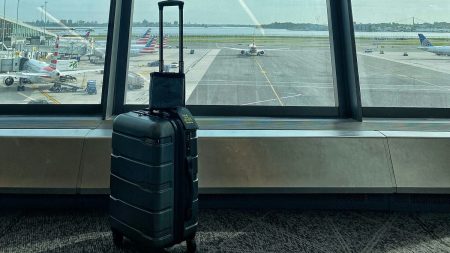Rail Fare Reform: A Welcome Relief for Passengers
The recent decision to eliminate peak rail fares represents a meaningful step toward making train travel more affordable and accessible for commuters across the country. This change is anticipated to deliver substantial financial relief to regular train users who have long struggled with the premium costs associated with traveling during the busiest hours of the day. As households continue to navigate challenging economic conditions and rising costs in various aspects of daily life, the removal of these higher-priced tickets comes as a timely intervention that could ease the financial burden on thousands of travelers.
The peak fare system has historically created a significant price disparity in rail travel, with commuters often paying substantially more for journeys taken during morning and evening rush hours compared to the same trips made during off-peak times. This pricing structure has been particularly punishing for workers with fixed schedules who have no flexibility to travel at less expensive times of day. By eliminating this two-tier pricing approach, the new policy acknowledges the reality that many passengers have no choice about when they travel and should not face financial penalties for simply getting to and from work at standard business hours.
Transportation experts anticipate that this fare simplification will yield multiple benefits beyond immediate cost savings. With more affordable travel options throughout the day, some passengers may choose to adjust their commuting patterns, potentially helping to distribute passenger loads more evenly across different times. This redistribution could improve the overall travel experience by reducing overcrowding during traditional rush hours. Additionally, more predictable and reasonable pricing may encourage greater use of public transportation, which aligns with broader environmental goals of reducing private vehicle usage and lowering carbon emissions from the transportation sector.
The financial impact for individual travelers will vary depending on their specific journey patterns, but many regular commuters stand to save hundreds or even thousands of pounds annually. These savings come at a crucial time when many households are carefully reviewing their budgets and seeking ways to reduce expenses. For families already dealing with increased costs for essentials like food, energy, and housing, the ability to reduce transportation expenses without changing behavior represents a rare bright spot in the current economic landscape. These savings may also have positive ripple effects throughout local economies as consumers potentially redirect some of this money toward other goods and services.
Implementation of this fare reform will require significant adjustments to ticketing systems, revenue models, and possibly service planning for rail operators. Transit authorities will need to carefully monitor passenger volumes and adjust service frequency to accommodate any shifts in travel patterns that emerge following the price changes. Some industry observers have raised questions about the long-term funding implications of removing premium pricing during high-demand periods, suggesting that maintaining service quality while reducing revenue streams may present challenges. However, proponents argue that more consistent and affordable pricing could ultimately attract additional riders to the rail system, potentially offsetting some revenue reductions through increased overall ridership.
For commuters who have long organized their lives around avoiding peak fares—whether by starting work extremely early, staying late at the office, or splitting their journeys with lengthy breaks—this change represents not just financial relief but also a quality-of-life improvement. The freedom to travel when convenient without incurring significant financial penalties offers greater flexibility and potentially reduces stress associated with commuting. As the nation continues to navigate economic uncertainty, this passenger-focused reform demonstrates a recognition that transportation policy can play an important role in addressing broader cost-of-living challenges and supporting everyday citizens through practical, tangible measures that make a difference in daily life.






